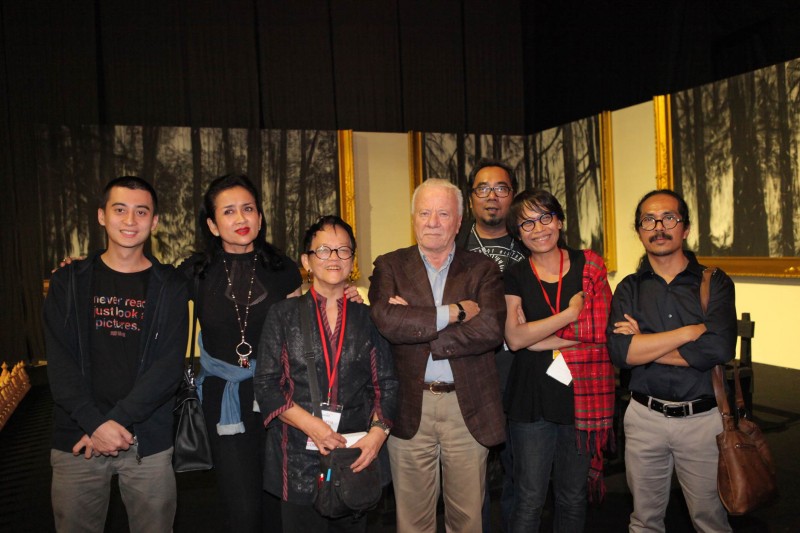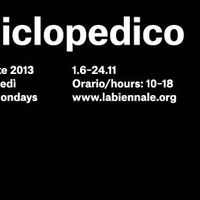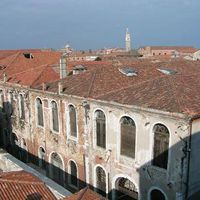Indonesia at the Venice Biennale | In conversation with Carla Bianpoen and Rifky Effendy

This June, the Indonesian Pavilion, under the banner of "Sakti"- in Sanskrit meaning cosmic energy - is all set to be a force to reckon with at the 55th Venice Biennale. Five artists have been selected: Albert Yonathan Setyawan, Eko Nugroho, Entang Wiharso, Sri Astari (Rasjid), and Titarubi. Curators Carla Bianpoen and Rifky Effendy, project initiator and producer Restu Imansari, and Commissioner Adji Damais have had the unenviable task of shaping this ambitious project.
Bharti Lalwani speaks to Carla Bianpoen and Rifky Effendy to find out more.
(Key: Carla Bianpoen: CB, Rifky Effendy: RE, Bharti: B)
B: How did you come to initiate the Curatorial Board for the Indonesian Pavilion for 55th Venice Biennale?
CB & RE: It was Restu Imansari Kusumaningrum who initiated the project while forming the board was a joint exercise. When she visited the 54th Venice Biennale to attend the opening of the Ukrainian Pavilion, she was impressed by what she saw there and felt sad that Indonesia was not represented with a national pavilion. Back from Venice she tried to convince the government of the significance of an Indonesian representation in this most important international platform.
B: Was it easy convincing them?
CB & RE: Convincing was one thing, working it all out was another. Changing departments and personnel in the bureaucracy posed some of the hurdles in the long process of dealings.
Actually, this will not be the first time for Indonesia. In 1954, Affandi, Indonesia's modern master, was invited to participate as an artist. In 2003 Heri Dono became the first and so far the only contemporary Indonesian artist to be invited as an individual to participate in the official international exhibition of the Biennale, while the first Indonesian pavilion also in 2003, was curated by Amir Sidharta. This was followed by another attempt in 2005 by curator Dwi Marianto.
Heri Dono was invited by the artistic director Francesco Bonami. Bonami had conceived 10 exhibitions by different curators and Heri was invited to participate in the exhibition Zone Of Urgency, curated by Hou Hanru and his work was shown in the Arsenale. Today things are organized differently and the international exhibition is now in a special building "La Biennale".
This year's Indonesia National Pavilion in the 55th International Exhibition of La Biennale di Venezia will for the first time be taking place in the Arsenale, one of the two main venues of this event. The Ministry for Tourism and Creative Economy have allocated funds for the rent of 500 square meters for the duration of 6 months in the Arsenale. This will also be the first time that the Indonesia National Pavilion theme is taken from Indonesian cultural heritage.
B: There seem to have been a number of hurdles along the way; in your opinion and years of critical observation of the local and international art scene, what have been the major challenges for Indonesia thus far in order to have a Pavilion?
CB & RE: Many people in Indonesia do not yet understand the significance of having a national pavilion in the Venice Biennale but the Ministry for Tourism and Creative Economy has allocated the money needed for the rent of 500 square meters in the Arsenale for the duration of the biennale from June to November 2013. Though the rent is just a small portion of the budget, funding is still a major problem.
B: You have picked a diverse list of artists who work with various mediums, from ceramics to sculpture to new media, and they also represent different generations, the oldest being Sri Astari (1959) and the youngest, Albert Yonathan (1983). Will they all be making new works for the biennale?
CB & RE: Yes they have all made new works, each artist has articulated on representing SAKTI. Though of different generations, Astari and Albert have remarkably been on the same wave-length as is evident in their art practice, both refer to spirituality and the internal journey of seeking the cosmic divine.
As for the curatorial setting, the display of works within 500 square meters in the Arsenale has been designed with the assistance of Balinese architect Wimba Anenggata and interior desigger Djanti Soekirno, while the sound scape is composed by Rahayu Supanggah. The Pavilion is a production of PT Bumi Purnati (Jakarta)and Change Performing Arts (Milan).
B: How will each of their artwork tie in together in order to fulfill the curatorial narrative while providing a global context through local references?
CB & RE: An unprecedented influx of information through global exchange has no doubt made a mark on art production internationally. However, in Indonesia, the encounter between global forces and the existing culture has resulted in the sort of contemporary art which bears its own authentic and unique characteristics. Therefore, our main objective is to showcase a substantially alternative art practice amidst other international pavilions at Venice Biennale. You must come and see, feel, and experience the Indonesia National Pavilion in the 55th International Exhibition of La Biennale di Venezia.
B: I would love to! I am really intrigued by the curatorial header "Sakti" which has its roots in Sanskrit. In ancient Indian philosophy, Shakti represents the dynamic feminine energy of the divine- and in folklore, features as the Goddess who is the counterpart to the masculine (and destructive) god- Shiva. Why this mystical theme, and what sort of a creative force will we be seeing from the five selected artists?
CB & RE: Sakti indeed derives from the Hindu belief in Shakti; Sakti in Indonesia denotes various meanings which have integrated with the local culture over hundreds of years. Associated with achieving something beyond human ability. Sakti, among multiple meanings, also connotes change, regenration and feminine creative energy as opposed to brute strength.
Within our Javanese cultural and philosophical realm, Sakti symbolizes the power of the South Sea Queen, who's strength is believed to be behind the Sultan's power, as well as within each person. It became Sri Astari's metaphor expressed in the installation Pendopo: Dancing the Wild Seas with seven Bedoyo dancers. The "Pendopo" is the fundamental element of Javanese architecture. In the palace it used to be the sacred space where the Sultan was anointed with the South Sea Queen's invisible presence, power and blessing. In the commoners' house, pendopo is where visitors are welcomed and ceremonial events are held, a sort of ante chamber. For Sri Astari, it is a metaphor for the soul. To find one's identity, one has to look intrinsically to find the power that is believed to be present within. According to Astari, it is essential for everyone to 'switch on' that power if the human race is to survive beyond materialism.
Albert Yonathan's Cosmic Labyrinth: The Silent Path made of 1,200 objects in the form of ceramic stupas, is also meant as a spiritual meditation in order to find enlightenment through transformative energy which he believes is the power of Sakti.
For Titarubi, knowledge and science are the pillars of Sakti, which she reveals with the installation The Shadow of Surrender featuring school benches made from burnt wood with thick open books placed on them- a metaphor for education and the length of time and perseverance needed to acquire it. The charcoal drawing, accompanying this installation, of burnt and ashen trees reference the school benches, as well as the cycle of life, death and regeneration (burnt trees in the forest are fertilizers from which new trees will emerge). This cycle of continuity is also revealed within the cut frames for the drawing.
Meanwhile Entang Wiharso's The Indonesian: No Time to Hide features a large gate covered with reliefs referencing the Borobudur Temple, but depicting contemporary life. The sculptures around a meeting table have distorted faces of the country's presidents- past and present- (all made with graphite and resin) which refer to perception versus reality- how negative notions of the country are countered by the inner strength of its citizens who stand tall- a feat of Sakti.
Eko Nugroho's bamboo raft Menghasut Badai-badai (Instigating Storms) with his iconic figures depicted on it also refer to the ability of the country to survive amidst overwhelming political, social and religious challenges.
B: Venice attracts a huge and varied audience- from globe-trotting curators and collectors to art enthusiasts from all corners of the world- who more often than not end up on a marathon of sorts where everyone consumes the art in a rushed manner. What sort of an experience do you two hope to create through this glimpse of contemporary Indonesia?
CB & RE: We hope the pavillion as a whole will exert a visceral and visual experience. By re-reading the past and contemplating the present we hope for Indonesian contemporary art to take its due place on the world map while offering a different art practice. We have also written a curatorial essay together in order to provide context for the audience. The catalog comes in the form of a book which also includes an essay by Bali based author Jean Couteau, along with profiles of the participating artists.
The hardship and struggle of our nation aside, we wanted to emphasize the feminine creative power that ultimately prevails as it does in the mythical power of Dewi Sri, the rice goddess, or the hidden, yet poignantly tangible power of the South Sea Queen. Amidst the ever increasing commodification of art, we wanted to offer an alternative art practice where tradition is interpreted within a contemporary context.
Bharti Lalwani has a BA in Fine Art and an MA in Contemporary Art; She writes for several publications across SE Asia and India.
Similar content
By Kerrine Goh
04 Jul 2013
from - to
09 May 2015 - 22 Nov 2015
from - to
01 Jun 2013 - 24 Nov 2013
posted on
07 Jan 2011
01 Sep 2019
30 Jan 2012






